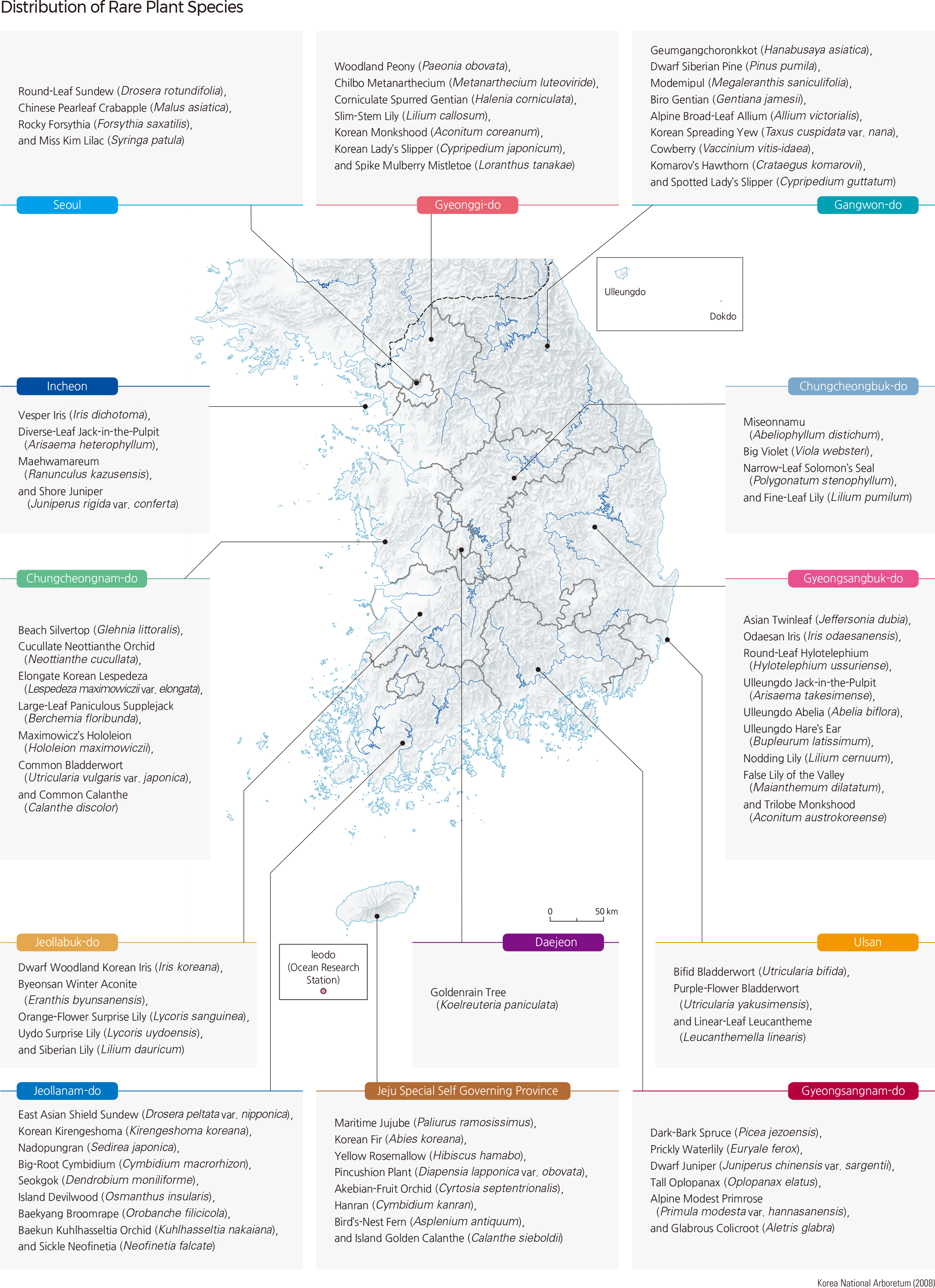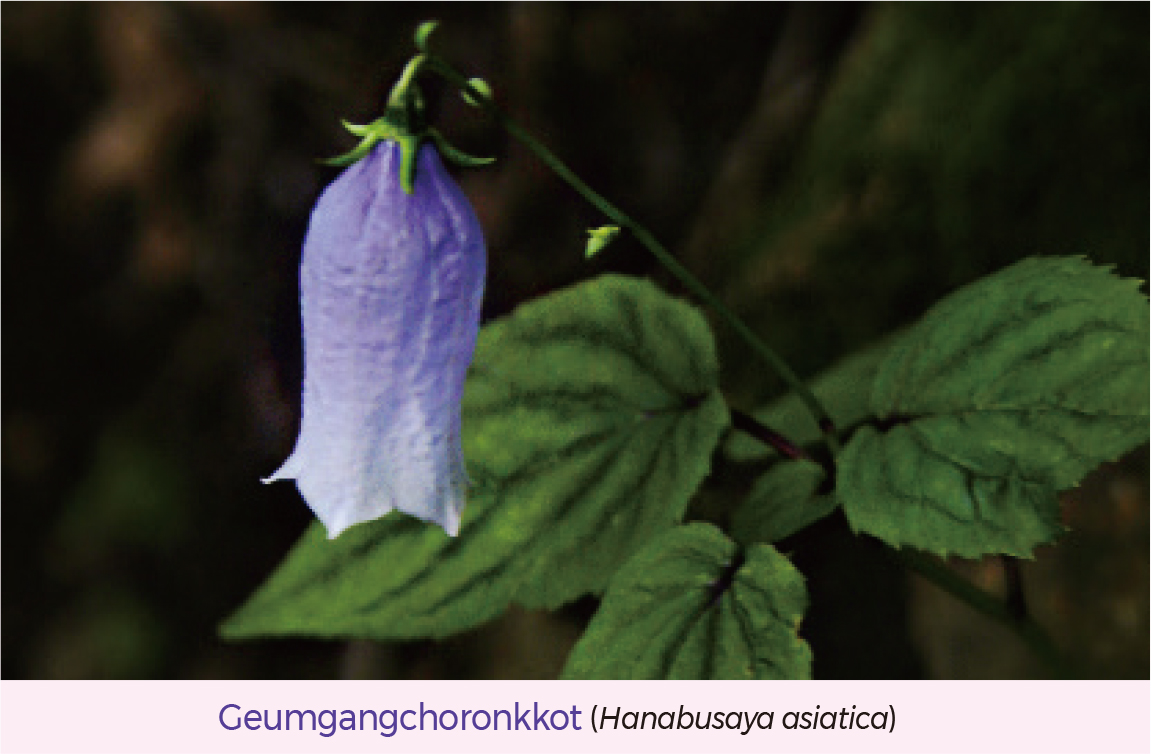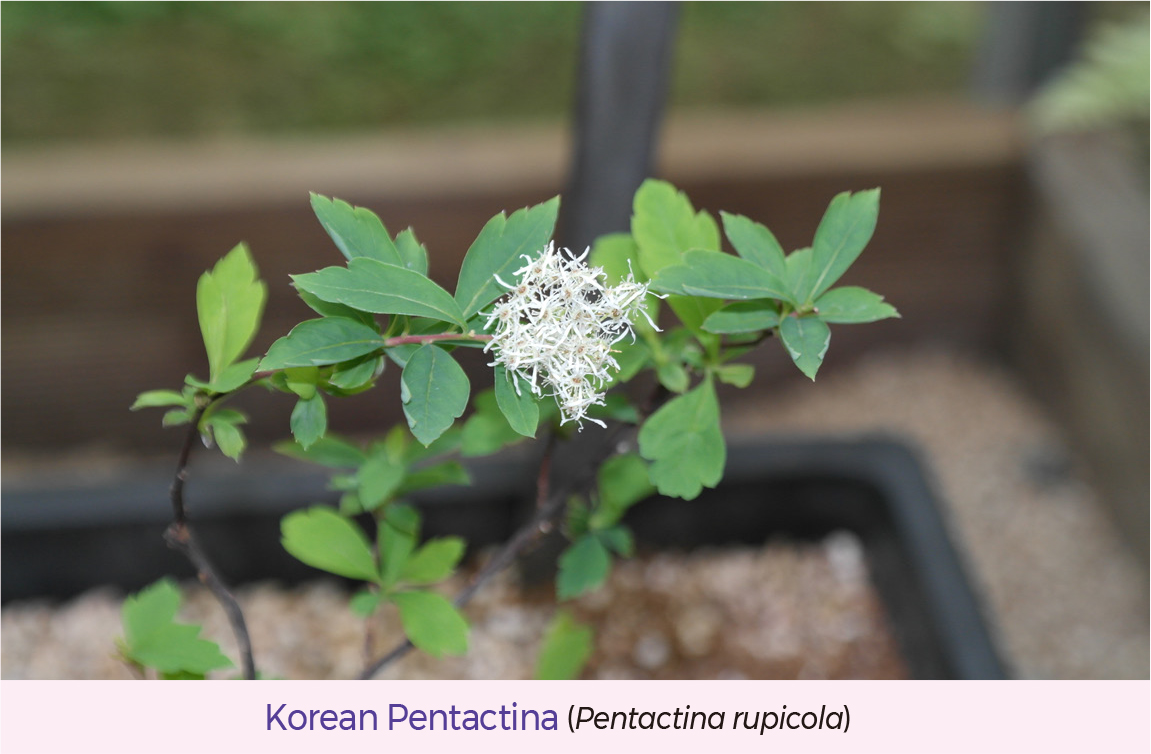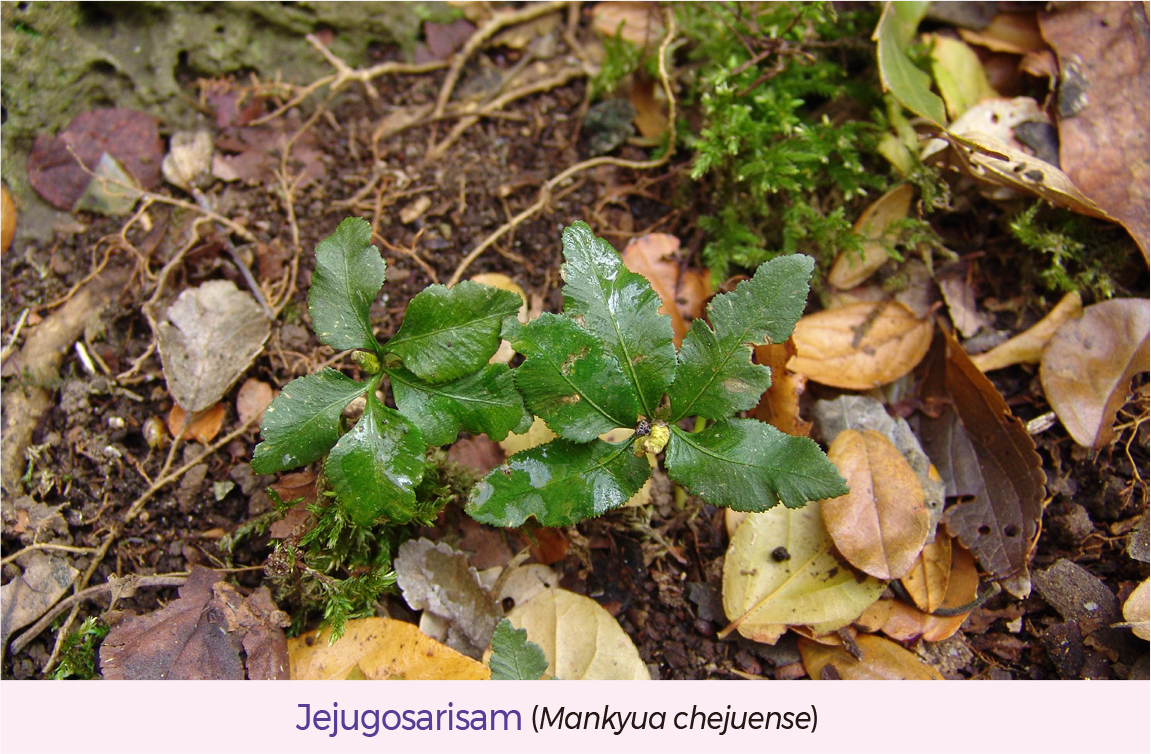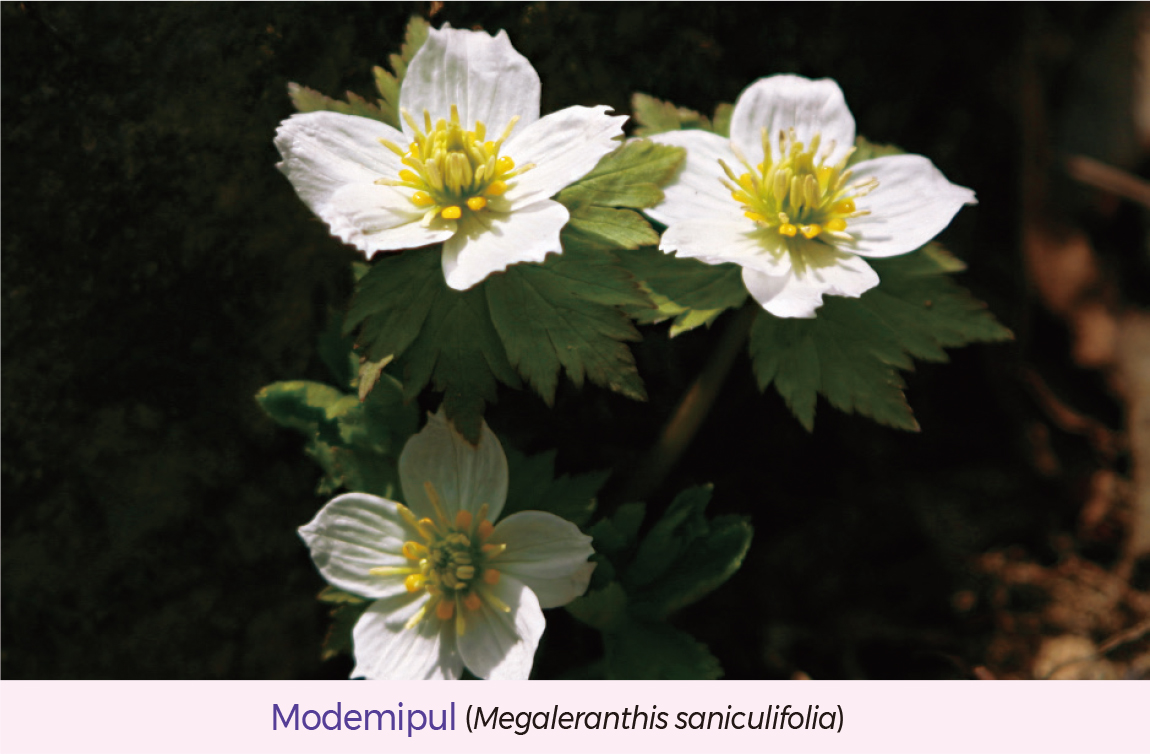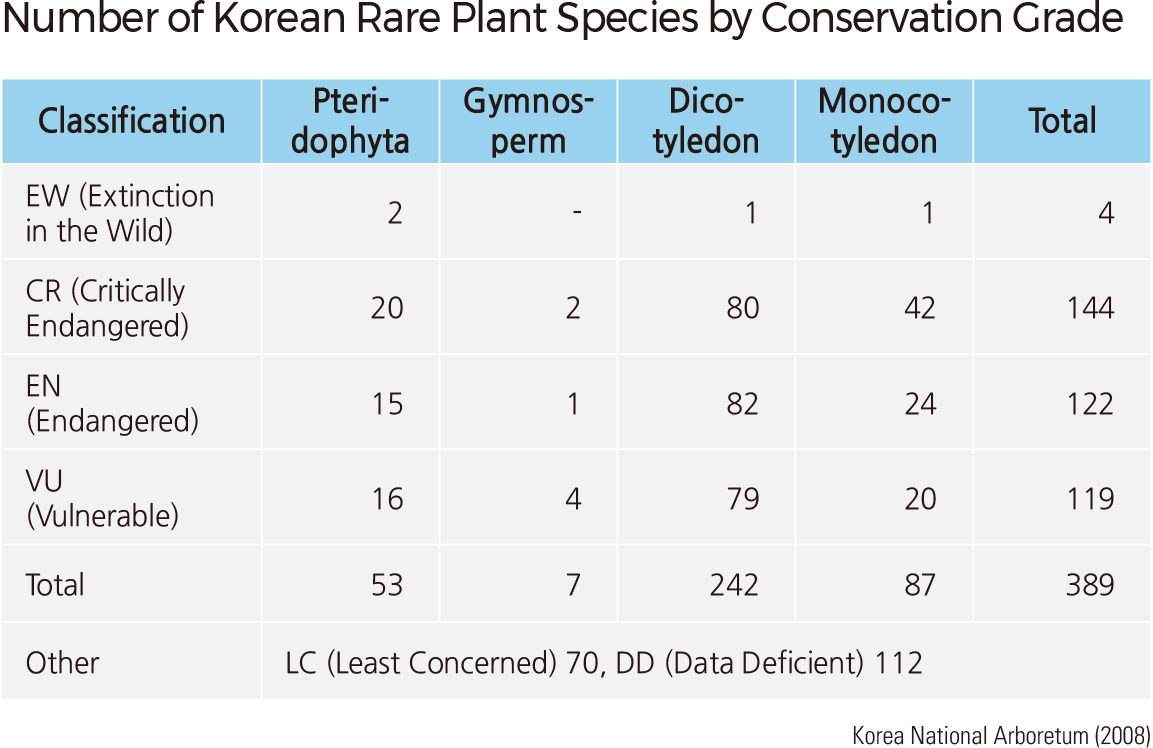English II 2020
Many wildlife species are endangered by habitat change caused by climate change and global warming. The IUCN warns that around 30% of global plant resources in the 21st century will face the crisis of extinction.
Along with the global effort to conserve rare plant species, scholars in South Korea are collecting basic data and conducting research projects on native flora. First, 571 rare species were selected based on an endangered plant assessment standard and category proposed by the IUCN in 2008. Selected rare plant species have been catalogued by their grade and used as basic data for conservation.
Rare plant species in South Korea are classified into four classes: four extinction in the wild species, 144 critically endangered species, 122 endangered species, and 199 vulnerable species. Also, there are 70 species in the category of least concerned and 112 species in the category of data deficient. Taxonomically, there are 53 pteridophytes, 7 gymnosperms, 242 dicotyledons, and 87 monocotyledons of angiospermae.
The Korean National Arboretum and associated institutions are putting effort into conserving biodiversity by conducting local conservation, propagating endangered plant species, and recovering natural habitats.
Endemic plants are native plants that grow in limited places. The population of an endemic species generally decreases or is maintained as a small group because an endemic species is either a remnant species that was once widely distributed but became confined to small areas due to environmental factors or a new species created by regional speciation.
Of 4,171 native plant species based on the 2015 Korean Plant Names Index, 328 are endemic species, accounting for 7.8% of the total native plant species.
Among Korean endemic plant species, six species show distinctive taxonomic and morphological differences compared to other plant species. Those are Miseonnamu (Abeliophyllum distichum) found in Jincheon of Chungcheongbuk-do, Korean Necklace Pod (Echinosophora koreensis) found in Bukcheong of Hamgyeongbuk-do, Geumgangchorongkkot (Hanabusaya asiatica) and Korean Pentactina (Pentactina rupicola) found in Geumgangsan, Modemipul (Megaleranthis saniculifolia) found in Jirisan, and Jejugosarisam (Mankyua chejuense) found in Jejudo. They hold a high plant resource value because each plant species is the only species of its genus. |
